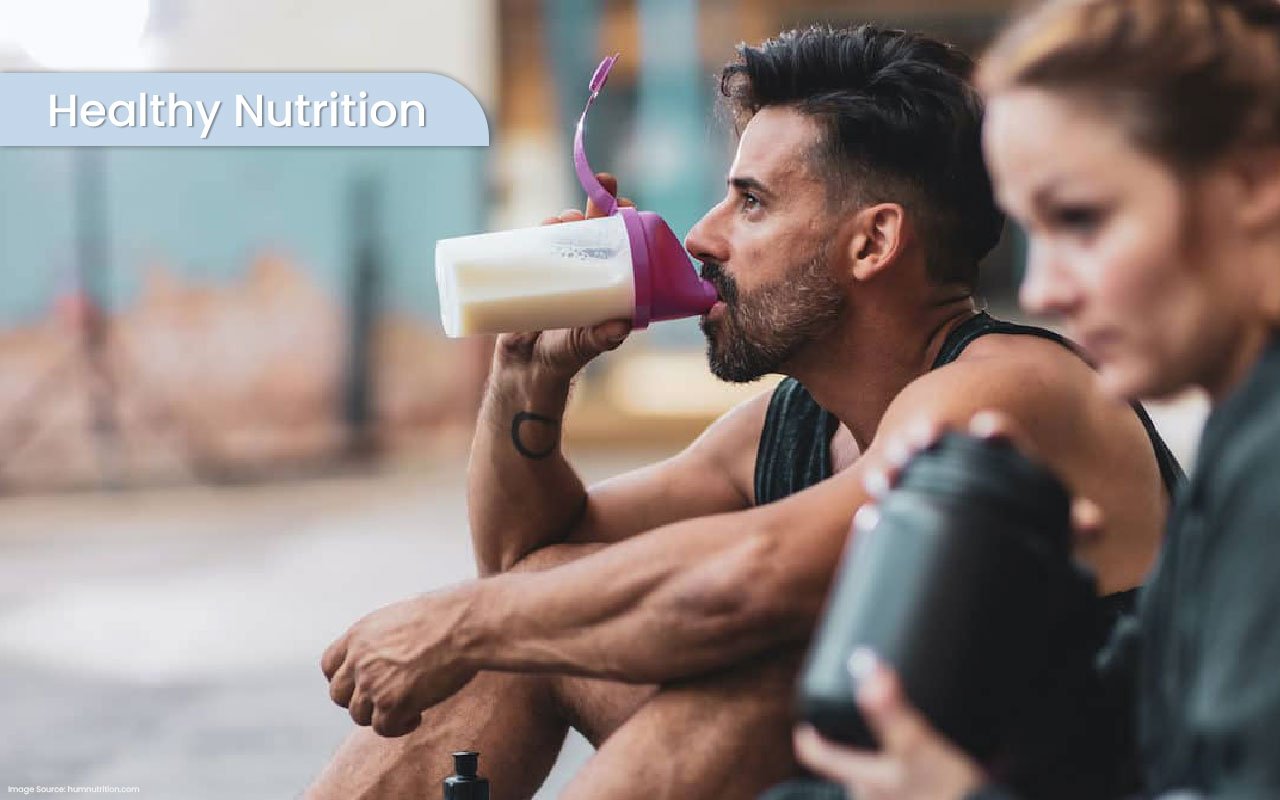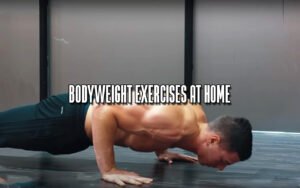
In this article, we have explained the 3 important keys to fat loss, fine-tune your nutrition and exercise. This fat loss guide is jam-packed with information and ideas to assist you in achieving your goals.
Many individuals would like to reduce weight. Many individuals want to slim down their bodies by reducing body fat (BF). However, most of those individuals are unaware of how to accomplish it. They’re bombarded by contradictory information from one fad diet to the next, one person telling them something different about training than someone else. Those that have had past success with weight reduction are familiar with their bodies and how they react to various types of diet and exercise manipulation. Those unfamiliar with the idea look to those who are successful and try to follow in their footsteps. Everyone should remember that each person is unique. It’s difficult to say what will work for one person and not the next.
Three keys to fat loss, however, apply to everyone:
- Goal Setting
- Nutrition
- Exercise
Every key is essential; without one, individuals are less likely to maintain the weight or fat off for an extended period.
This post will go through each of the keys and offer tips on how to use them effectively for fat reduction.
Fat Loss Key 1: Goal Setting

Before you look at diet and exercise, you should first establish goals. Take a look at where you are now and what you wish to be in the future. Your end objective can be whatever you choose because, as long as you have a reasonable time frame to accomplish it, you may achieve anything you want! Once you’ve determined your long-term objective, set smaller objectives—these short-term goals that will help you reach your long-term goal.
Goals made should be SMART goals.
- S = Specific – You must be clear about your aims – for example, I’d like to reduce 4 percent body fat in 8 weeks.
- M = Measurable – You should be able to track your progress in getting closer to your goal, such as measuring body fat using a 6-8 skin fold bodily composition testing at least once a week.
- A = Adjustable – You must be able to modify your goals if something unexpected happens, making them no longer realistic for the time period you have committed to.
- R = Realistic – Your goals must be feasible; for example, losing 4% of one’s body fat in 8 weeks is fine; but losing 4% of one’s body weight in two weeks is not.
- T = Time-Based – You must establish a timetable within which you wish to accomplish your objective; identify specific starting and ending dates, such as I’d want to reduce 4% body fat.
Fat Loss Key 2: Nutrition

After you’ve determined your goal(s), the second thing you should consider is your diet. The most IMPORTANT aspect of weight reduction is diet, accounting for 80-90% of your success.
When you look at your diet, keep the following in mind: a diet that can only be maintained for brief periods of time (i.e., low-calorie or low-carbohydrate diets) is what “diet” means. When you think of a diet, you should consider a lifestyle diet (i.e., your diet should be something that you can easily keep up with all year, with the sole exception being the number of calories consumed, depending on your body’s needs).
There are six essential principles to your diet:
- Adequacy – Your diet is adequate in calories and nutrients to fulfill your requirements.
- Balance – You should not overeat just one food.
- Energy Control – You need to figure out your energy requirements (i.e., maintenance) and plan for it; to receive the nutrients you need without exceeding your calorie allowance, eat meals with a high nutrient density.
- Nutrient Density – Choose meals that provide the most outstanding amount of nutrients for the least amount of calories.
- Moderation – Consuming food items with moderate fat and sugar content effectively to lose weight.
- Variety – Consuming a wide range of meals daily.
Diet Tips for Fat Loss
Here are some diet strategies for fat loss:
The first thing you must do is calculate your maintenance calories (There are several ways to measure this, most of which factor in current body weight, height, and physical activity). For fat loss, you should make sure that you consume 500 calories LESS than maintenance. If you want to lose weight at a slower or quicker rate, you may alter and modify your calorie consumption each week.
Eat Frequently- Every 2-3 hours after waking is a good time to consume. This helps maintain the metabolism throughout the day and keeps insulin levels constant (you can see that three meals are not enough, even if they are in little portions).
Complex Carbohydrates- Complex carbohydrates (CHO) should be consumed at meals. Complex carbohydrates should include quality lean protein (chicken breast, fish, tuna, salmon, lean beef, egg whites) and fibrous complex carbohydrates (such as vegetables).
Avoiding fat is not advised (except for Saturated fat and Trans fats). It would be best if you had fat in your diet because it is essential for energy metabolism and other processes throughout your body. Make sure you consume at least 30-60 grams of high-quality fats each day (i.e., flaxseeds or flax seed oil, fish oils, peanut butter, nuts – especially almonds and walnuts, hemp seed oil, olive oil, etc.) or 15-30% of your energy intake.
Do NOT avoid complex carbohydrates- Complex carbohydrates, in the amount of at least 50-100 grams per day, are required for your body to burn fat effectively and give your brain and central nervous system enough energy. As a MINIMUM, have at least 1 gram of CHO per kg of body mass daily.
No Extra Sugar- Only the natural sugar present in food is required daily; it’s primarily found in fruit. Too much sugar can dramatically affect insulin levels, so it’s critical to keep them as constant as possible throughout the day. The ideal moment to consume sugar is immediately after a resistance exercise when the body attempts to restore muscle glycogen stores.
As a result, drink a protein shake with some simple sugar (such as a fruit smoothie with ice and protein powder) as quickly as possible after your resistance training, and then a good meal (containing at least 50 grams of complex CHO, 30 grams of protein, and fibrous CHO) about 30 minutes afterward.
Eat Enough Protein- Protein must be consumed sufficiently to avoid muscular deterioration and maintain a high thermic effect. The dietary requirement for protein is between 0.8 and 1.7 grams per kilogram of body weight per day, depending on your level of activity and gender; females require 25-30% less protein than males or 15-25 percent of your daily energy intake from protein for muscle-sparing advantages.
2 Servings of Dairy- It’s been shown that eating two dairy servings daily can help you lose more fat than if you didn’t eat it.
Drink Enough Water- Your body needs at least 2.2-3.0 liters each day to meet its water demands. For those with higher energy outputs, 4.5 liters (i.e., a gallon) of water per day is a good recommendation. This will assist you in keeping your system free of clutter.
Do not drink tea or coffee- If you wish to get rid of belly fat, drink GREEN tea instead; it promotes thermogenesis and helps if consumed one hour before beginning cardio.
Do not drink alcohol- Alcohol has no nutritional value and is high in calories.
Cut Down on Salt- Reduce the amount of salt added to meals. Instead, season your dishes with herbs and spices (such as ginger, cumin, cayenne pepper, curry powder, chili powder, and garlic) to promote thermogenesis.
Eat Natural- Most food should be consumed as ‘naturally’ as possible. These are examples of fresh fruit and vegetables, meat, grains, and other foods. Avoid eating too much-packaged food, as it is high in additional calories and sugar.
It’s OK to Cheat- However, it’s also important to remember that cheating isn’t always wrong. The body requires occasional “cheat meals.” All of the above suggestions are thrown out the window, and you have a day when you eat whatever you want, which not only helps your mind but also helps to keep your body from entering starvation mode (i.e., where the body fights you to hold onto as much fat as possible).
If you don’t want to ‘cheat,’ consider adding in 1-2 higher calorie days (i.e., go up to only just above Maintenance, Bulking, or even somewhat higher), with the extra calories coming from high-quality complex carbohydrates.
Supplements and Fat Loss
Supplements should not be a significant issue since most fat loss may be accomplished by eating the right food at the proper time, and unless everything you’re doing is already done to ensure maximum results in your desired timeframe, supplementation should not be a source of concern. However, I believe there are a few supplements that every regimen should have:
- A multivitamin is often taken to boost one’s nutrient intake but may also be used to provide a nutritional boost (although you should eat as much varied food as possible to fulfill the RDI/AI of most nutrients from real food).
- Creatine monohydrate helps the body recover faster, indirectly increasing strength levels and lean body mass.
- Flax seeds/hemp seeds/fish oils are some of the better fats. These are the GOOD fats. Flax or hemp seed oil tastes great with breakfast and makes excellent protein shakes.
- Protein powder is an excellent addition to your diet. It’s beneficial for snacks between meals or after exercise to ensure that you get enough protein in your diet.
Aside from these four ‘staple’ supplements, you don’t need anything else. You don’t need fat burners or thermogenic supplements; they’re a waste of money unless you’re already thin and want to squeeze out the last 1-2 pounds of body fat (i.e., like a fitness competitor, etc.).
Fat Loss Key 3: Exercise

You may lose fat by dieting alone, but not as effectively as you would while utilizing a calorie-limited diet and exercise program. If you only diet, you will look like a smaller version of yourself. Exercising improves your mood and self-esteem, as well as building muscle (which aids in the burning of more calories and the loss of more fat) and providing a method to express yourself.
The FITT and SOAP principles should be followed when working out.
- F = Frequency – The number of times a person has gone through training in a given period of time.
- I = Intensity – The intensity of the effort you’re doing – e.g. if you’re training for basic strength, you’ll use 80-90% of your one-repetition maximum.
- T = Time – The amount of time spent in the session is essential; resistance training should not last more than 45-50 minutes.
- T = Type – The intensity at which the exercise is being done- i.e., aerobic, anaerobic, strength, power, etc.
- S = Specificity – You must be training for fat loss if you’re going to train yourself in a method suited to achieving the desired training adaptation or goal accomplishment. Seasonality also has an impact on the athlete’s sports season. As an athlete goes through the pre-season, in-season, and postseason, all types of training should advance from generic to sport-specific—for example, if you’re a sportsperson, your off-season would be general conditioning followed by strength and power work before speed work. “The more comparable the training activity is to the sport movement, the higher the chance of a successful transfer.
- O = Overload – The term is used to describe assigning a more intense exercise or training plan than the athlete is used to. Even though an otherwise well-designed program may be effective, the lack of a stimulus to overload significantly reduces the athlete’s capacity to improve. “Overload training principles ensure that the sport requires the muscles used in the selected exercises and that the loads are adequate to push athletes to become stronger, bigger, faster, and more resistant to fatigue.” If you don’t improve weights lifted during resistance training regularly, you’re not overloading the muscles enough. Gains are only achieved when the body is constantly pushed.
- A = Adaptation – Overload must be maintained at all times; otherwise, [positive] adaptations can be lost quickly, and performance may begin to fall, with fitness and conditioning occasionally returning to their original state – i.e., if there was no periodization to your training and you did the same thing over time, your body would cease making improvements and progress.
- P = Progression – The training’s intensity must increase with time. Progression, when done correctly, can lead to long-term training advantages – in other words, this is why you must modify your workout routine every four to six weeks to keep yourself challenged and getting results.
The most incredible fat-reducing regimen incorporates weights, cardio (particularly high-intensity training), and flexibility (to aid muscle mobility and joint comfort).
Resistance Training
You might start with two weekly training days if you’re a beginner. Otherwise, I’d recommend a 3- or 4-day split. Every body part should be worked once a week for optimal results; this provides ample recovery time before the following exercise session. Monday is the day for legs and abs, Tuesday is for the chest and back, Thursday is for the shoulders and traps, and Friday is for the arms. (You only have to work your abs every other day; it works the same way as any other body part.) You only have to work out Abs twice a week; it’s the same as any other body part.
Multi-joint, compound activities are the most effective for building muscle and burning fat since they engage more of your body to do the activity than isolation exercises (these are a waste of time unless you want a pump close to competition).
Squat and deadlift are the most fantastic compound exercises because they work almost every muscle in your body. Power cleans, bench presses, shoulder presses, pull-ups, dips, and calf raises are excellent exercises to add to your program (the only effective isolation exercise).
You should do at least 2 exercises for each muscle group, with 4 sets of 6-10 (even up to 12) reps per exercise and 1-2 minutes between sets (the shorter the recovery time, the lighter your weights will be, giving you a ‘cardio’ workout as well).
Always practice good form on every exercise; otherwise, you may be putting yourself in danger of hurting yourself. Every repetition should be well-managed and in excellent condition. It’s about how effectively you lift, not how much weight you can handle. As you train, your muscles will get stronger (although perhaps not so much when attempting to lose fat, but this depends on the person).
If you spend more than 45-50 minutes in total lifting (i.e., from the time you walk in until the time you leave, excluding if you do a warm-up – and this is entirely up to your own choice), you become too catabolic and risk losing muscle.
You should also modify your weight program every 4-6 weeks, so your body doesn’t get used to it and stop adapting. Simply put, this refers to altering the order of exercises in a session or the number of sets and reps performed for each activity (and it only needs to be one exercise changed at a time, small adjustments over the weeks).
A simple circuit plan for a beginner is as follows:
This basic routine will teach you how to do resistance training and condition your body, laying the groundwork for further progress. After 4-6 weeks, you’ll need to modify your strategy.
Instructions- Do a simple 10-minute warm-up. Select weights you can complete for each set of reps on each exercise (but not too many more), and utilize these throughout the session. Activities should be done from 1 to 8 with little or no rest (ideally, it should go from one workout to the next, but since you are a beginner 30-60 seconds will suffice). After one set (1-10), take a rest of 1-2 minutes, then repeat.
After 2-4 weeks, you may progress to 3 sets (or as many as you prefer).
For 5 minutes after the session, stretch your entire body. This should take you around 45 minutes to complete. Your weights should be increasing every week (i.e., not on all sessions, but rather keeping the same weights for a week before gradually increasing them over the following week’s sessions) to keep pushing your body.
- Dumbbell/Barbell Squats 2 x 12 (changing stance may target different muscles more: narrow stance focuses on the quadriceps, wide view on the gluteals and hamstrings, and sumo stance on the gluteal and adductors; etc.)
- 2 sets of 10 Dumbbell/Barbell Romanian Deadlifts
- 2 sets of 15-25 calf raise on a step
- Push-Ups 2 x as many as you can (with a minimum of 6 reps; when you’ve done all you can, move on to the Lat Pull-Down and finish the set there).
- 2 x as many push-ups can be completed
- Dumbbell Shoulder Press – 2 x 12-15 reps
- Dips 2 x 12-15 (do as many as possible with your body weight; after you’ve done all you can, go to Bench Dips and finish the set).
- 2 x 50 crunches
If you’re a beginner, I strongly advise obtaining a personal trainer so you can be taught the proper method (crucial) for each workout. Personal trainers can be there for your initial few exercises to help you establish starting weights as you learn about strength training. They also provide inspiration, encouragement, and a source of accountability.
Here’s a sample resistance scheme for a more experienced lifter:
This is only a simple example program. You may want to try a different split, such as push/pull, upper body/lower body, or whatever is best for you.
Legs & Abs:
- Barbell Squat 4 x 8-10 (can do it forward or backward)
- Barbell Deadlift 4 x 6-8
- 6 x 6 standing calf raises (This set-rep combination has provided me with the best development and definition in my calves).
- Abs- 100 total reps of any abdominal exercises (stick to the basics, such as crunches, weighted crunches, rope crunches, knee raises, hanging knee raises, etc.) – e.g., 3-4 exercises of 10-15 reps each – done as a superset with 30-60 seconds recovery in between.
Chest & Back:
- 4 x 8-10 on a Flat Barbell Bench Press
- close-grip pull-up 4 x as many as possible (this is a challenging exercise, and if you can only do 1-2 at first by yourself, place a bench under your feet to start yourself up at the top and then slowly lower yourself for negative reps; this still targets the muscle significantly.) – e.g., strive for 6-8 reps, finish what you can by yourself, then add negatives to equal 6-8.
- Incline Barbell Bench Press 4 x 8-10
- Bent-Over Barbell Row 4 x 8-10
Note: For example, you might use dumbbells rather than a barbell for the bench press, depending on your preferences.
Shoulders & Traps:
- 4 sets of 10 reps on the seated barbell/dumbbell shoulder press
- Standing Dumbbell Lateral 4 x 10-12 . picks up
- 4 x 10-12 Lying Dumbbell Rear Raises
- Dumbbell shrugs or barbell upright row 4 sets of 8-10
Arms & Abs:
- 4 x the number of dips you can do (you may also try bench dips, where you place your hands shoulder-width apart on a bench with your feet on the floor, knees bent at 90 degrees, thighs parallel to the floor, and lower yourself until your elbows are at 90 degrees of flexion) – this is a tough exercise.
- 4 x 6-8 Close-Grip Flat Barbell Bench Press
- 4 x 8-10 Standing Close-Grip Barbell Bicep Curl
- Incline Dumbbell Bicep Curl 4 x 8-10
- Abs – ~100 reps total
Cardio
Long, slow cardio activity, on the other hand, burns calories slowly over time. Many recommend doing two hours of cardio daily or twice-weekly cardio sessions to lose fat, but this is not required.
The most efficient method to reduce fat through cardio is to do one of the following:
- Interval training (i.e. efforts); or
- I was running at a HIGHER intensity (i.e., going out and running as fast as you can for a specific distance, rather than 45 minutes at a 60% HRmax).
In this section, our experts break down the differences between high-intensity and low-intensity exercises.
Forget about the “Fat Burning Zone” and other such nonsense; regardless of what fuel you use for cardio, your body will burn additional substrates throughout the rest of the day (i.e., if you burn fat during cardio, your body will utilize CHO later on in the day, and vice versa).
When I first tried to reduce weight (and still do it now), I utilized ‘Guerrilla Cardio’ (GC). This is a Tabata interval, meaning you’ll sprint instead of riding a bike. Jogging for 4 minutes as a ‘warm-up’ precedes 8 x 20 seconds hard out as fast as you can sprints/efforts, after which you go easy for 10 seconds and cool down for 4 minutes.
I do GCD (or variants of it; now I increase the number of efforts I do, and sometimes perform up to three days per week with a rest day between each one, as it is exhausting and takes a lot out of you. If you do this, and you are exercising and eating to lose weight, the results will be apparent.
If you’re not sure how often to do your cardio, consider walking every other day or running every third day. (However, don’t exercise beyond 30 minutes; after 30 minutes of activity, you’ll become catabolic and likely lose muscle, which isn’t what you want.) After sprinting, the highest calorie burners are skipping, stair jogging/running, and rowing.
Flexibility
Stretch for 10-20 minutes each day, ideally after completing either cardio or strength training, when your muscles are still warm to minimize the chance of harm. Stretching ensures that your muscles, ligaments, and tendons can move more freely and readily.
Remember that more isn’t always better when it comes to exercise! At a low cost, you can achieve significant results in a short period of time. It would help if you also remembered that much of this is experimental and that it’s crucial to figure out what works best for you since everyone is different and responds differently to various exercise routines.
Conclusion
To achieve fat loss, you must first establish a goal. Your objective should adhere to the standards of good goal-setting.
After you’ve determined your aim, the next step is to analyze your diet. Individualization of your diet is required to ensure that you receive the desired outcomes in the time frame that suits you most. Your diet should adhere to adequate, balanced energy control, nutritional density, moderation, and variety.
Exercise is the final element of the weight-loss puzzle. Your fitness program should be based on the FITT and SOAP guidelines; it should also include resistance training (2-4 times per week), cardio (predominantly in the form of high-intensity sessions), and flexibility (to help your joints and muscles).
As long as you’re eating correctly for fat loss, doing weights 2-4 times a week, doing cardio 3-5 times a week for 12-30 minutes each day (depending on the intensity; the higher the intensity, the shorter you should do it for!), and allowing your body to recuperate (this is critical; if you overdo it, your body won’t be able to recover fully, and you won’t get the results you want), you will lose fat!








